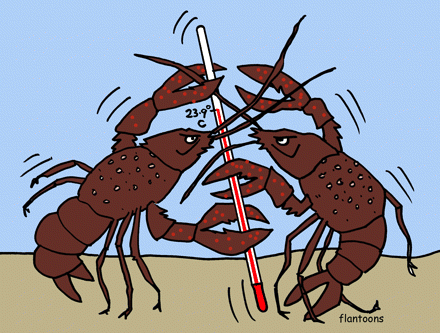|
Cold weather taking toll on crawfish supply, prices
By Christine Blank February 19, 2014 SHARE With a Mardi Gras festivities and the Lenten season beginning on 5 March, it is certainly a tough time of year to have reduced crawfish supply from Louisiana. Unfortunately, that is exactly what is happening because of record cold temperatures in the region. Buyers and farmed crawfish suppliers estimate that current pond production is off 90 percent compared to what it typically is this time of year. “The numbers are fairly bleak. The water temperatures get to a certain point and they just don’t move,” Frank Randol, operator of crawfish packing plants and owner of Randol’s Restaurant in Lafayette, La., told SeafoodSource. “It is terrible. So far this year, we have caught less than 10 percent of what we did this time last year,” said crawfish farmer Lindsey Aucoin. Buyers say the few crawfish that are being caught are small, and are going for as high as USD 4.25 (EUR 3.09) a pound, compared to around USD 3.25 (EUR 2.36) last February. The first crawfish pond catch is typically in January and runs through the spring. The wild crawfish catch ¬— the years that there is a good catch — traditionally comes on in March. Unfortunately, the pond crawfish suffered from water temperatures below 40 and 50 degrees for several days in a row this winter. “Until the water temperature gets above 60 degrees, there is not much activity in the ponds. The cold water affects crawfish’ metabolism, so they grow less,” Mark Shirley, agriculture specialist with Louisiana Sea Grant and the LSU Ag Center, told SeafoodSource. As long as water temperatures stay above 50 degrees and there are more sunny days, the crawfish could be more plentiful starting in around two weeks, Shirley said. Fortunately, that coincides with Mardi Gras and Lent, when retailers and foodservice buyers are looking for large quantities for crawfish boils. If wild crawfish supply from the Atchafalaya Basin is plentiful this spring, that should also take pressure of the pond crop and reduce prices. However, it is difficult to predict if the wild catch will be great or fairly non-existent, according to Shirley. “That is a wildcard. It depends on the amount of water flow that comes into the Basin from the springtime rise in the Mississippi River, as well as the timing, and sometimes other factors,” Shirley said. Christine Blank Contributing Editor [email protected] @EditorsWriters @FlavorfulExcursions Shared from: https://www.seafoodsource.com/
0 Comments
Leave a Reply. |






 RSS Feed
RSS Feed